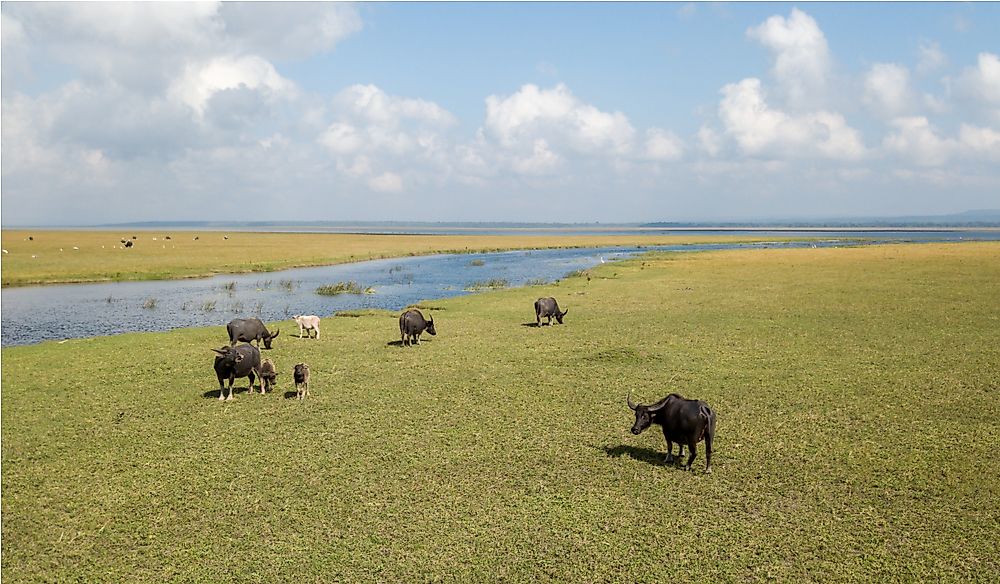What Are The Major Natural Resources Of Timor-Leste?

Timor-Leste, more commonly referred to as East Timor, is an Asian nation rated as a low-income country by major financial institutions such as the World Bank. In 2017, the Timorese GDP was $2.955 billion which was the 59th highest in the world according to estimates from the World Bank. The Timorese economy is dependent on its natural resources such as natural gas, crude oil, and arable land.
Natural Resources of Timor-Leste
Arable Land
One of East Timor's most important natural resources is arable land which covered approximately 25.82% of the country's territory in 2012 according to data from the World Bank. The data also indicated that from 2010 to 2012 the size of arable land in the country had increased after declining sharply from 2009 to 2010. The agricultural sector is one of East Timor's most important industries as it contributed 32% of the country's GDP in 2005. The most agriculturally productive areas in East Timor are located in the country's northern region. Timorese farmers grow a wide array of crops such as rice, corn, sweet potatoes, and cassava, which are mainly produced for local consumption. Timorese farmers also grow cash crops such as tobacco, coconuts, and coffee.
Water
One of East Timor's essential natural resources is water, and the country is divided into 12 hydrological units. The country has 29 main river systems, 17 of which are located in the country's southern edge while 12 are situated in the northern edge. Most of the country's rivers in East Timor are short and flow rapidly. East Timor's largest river system is the Loes River system which covers roughly 15% of the country's territory. The Loes River is also East Timor's longest river. The Laclo River System is also one of the major river systems in East Timor as it covers an area of roughly 781 square miles. Other major river basins in East Timor include the Tono and Noel Besi basins. East Timor only has a single massive freshwater lake, Lake Ira Lalaru which has a drainage basin of roughly 157 square miles. The quantity of water within the lake fluctuates from season to season. According to the Timorese government, in 2004, roughly 91% of the country's water was used for irrigation while 0.2% of the water was used in industries. East Timor is yet to fully develop its hydropower reserves as it only has few micro-hydropower plants.
Forests
In 2010, forests covered roughly 50% of East Timor's territory according to data from FAO. The data also indicated that from 1990 to 2010, East Timor lost approximately 23% of its forest cover. Mangrove forests are some of East Timor's most important forests. One of the major challenges facing Timorese forests is deforestation to give way for agriculture. The Timorese government has put in place several measures to safeguard the country's forests such as encouraging farmers to practice agroforestry and encouraging local communities to manage forests properly. The government believes that many jobs can be created in the forest conservation sector.
Oil and Gas
East Timor has been blessed with vast quantities of crude oil and natural gas which play an important role in the country’s economy. In the past, several companies searched for oil in East Timor, but they were unsuccessful. However, a geological survey by Netherland Sewell indicated that the country had at least 127 million barrels of oil in one area. Timor Resources, one of the major oil companies in the country, has planned to drill oil wells in the region. East Timor also has oil reserves and natural gas in the Timor Sea which it was unable to exploit fully because of a maritime border dispute with Australia. The dispute was resolved in 2018, and the resolution allowed East Timor to exploit the crude oil reserves within the sea.
Challenges Facing the Economy of East Timor
One of the major challenges facing the economy of East Timor is the high rate of unemployment in the country which was at 18% in 2010. The high unemployment rates contributed to the country's high poverty level which was roughly 53% in 2015. Another major challenge facing the Timorese economy is the country's high illiteracy rates. A study by the UNDP indicated that close to 50% of the country's population was illiterate.











